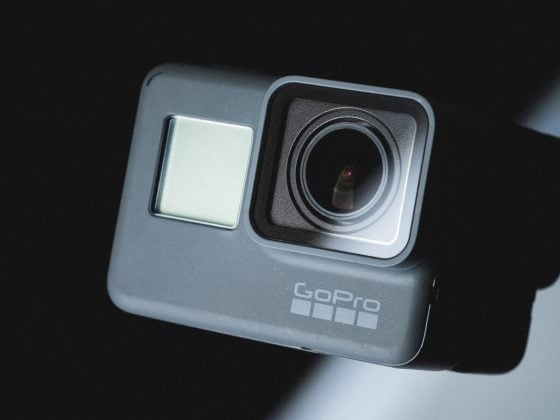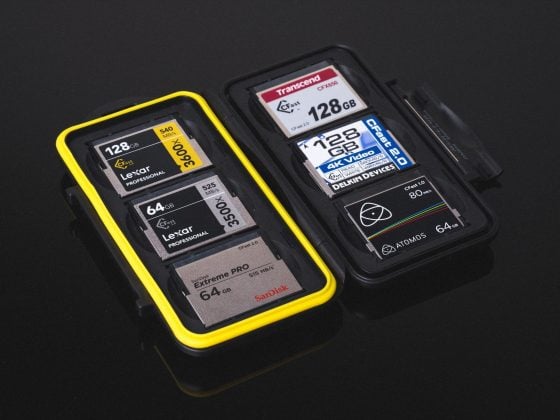The Fujinon 27mm f2.8 pancake lens is one of Fujifilm’s smallest and lightest lenses, perfect for the photographer looking for something compact and low-profile for street shooting or travel.
The 27mm produces a field of view with the 35mm equivalent of 41mm. From overall image quality to the mechanical build, this lens is very solid. Optically, it can produce some amazing images while never holding you back from major flaws.
Because of its small size and weight, it becomes one of those specialty lenses that every Fujifilm shooter should consider taking a second look at.
Fujifilm 27mm f2.8 Lens Review
Technical Stats
35mm Equiv – 41mm
Aperture Range – f2.8 – f16
Minimum Focus Range – 13.39″ / 34cm
Aperture Blades – 7
Design – 7 elements in 5 groups
Filter Threads: 39mm
An updated version of this lens now has an aperture ring and is weather-sealed.
Fujifilm XF 27mm f2.8 Black – Amazon

Fujinon 27mm f2.8 – Impressions
This lens is fantastic for its small and light weight. It makes Fujifilm’s smaller cameras even more compact.
On an APS-C body, the 27mm lens performs like a 41mm (35mm equivalent) lens, which seems pretty sharp optically. I’m noticing it performs better close than it does at infinity focus.
Ultimately, I’m very happy with this lens, and it’s been a great travel lens despite having many other great lenses to choose from. I especially love it with my X-Pro 2, but it’s also a fun lens with the X-T2. I’ll show some samples of what it looks like on those two cameras later.

Shooting 41mm
It’s always hard to decide between shooting a proper 35mm and a 50mm field of view. The Fujinon 27mm gives you a field of view of about 40mm.
35mm is often too wide, and you must get close to the action. 50mm seems like it’s too telephoto sometimes, and you have to move way back when trying to capture a large scene. 40mm for street photography seems right, that of course, is my opinion.

Overall Performance
The Good
- Sharp in the center
- Controlled vignetting and chromatic aberrations
- Excellent Build Quality
- Fast autofocus with minimal noise
The Bad
- No Fast Contrast AF
- Corners & edges are not sharp
- Slow
- Price

Lens Design
The lens design is very simple. It has no aperture controls or lens hood. Because of this, using the lens takes a little getting used to since you have to control the aperture through the camera. However, the latest update to this lens includes the aperture ring.



The 7-blade aperture, combined with the 7 elements in 5 groups and the HT-EBC lens coating, produces clean images with decent bokeh, contrast, and consistent sharpness.
While the lens doesn’t have any major flaws, it doesn’t have any unique characteristics either. There isn’t much magic to this lens; I would call it an all-around average, but it becomes simple and fun because it’s built so compact.
Note that this lens does not have the newest microcomputers for faster contrast AF. Although its phase detection autofocus is still very quick, it will perform slightly slower in low-light and high-frequency settings when contrast AF is used.
Size & Weight
This lens’s size and weight make it a great partner for any of Fujifilm’s rangefinder cameras. It also makes the X-Pro 2 much easier to handle and more compact.
Weight: 2.75 oz

Size (Dimensions): 2.4 x 0.91″ (61.2 x 23mm)

Technical Details

Mechanically, the Fujinon 27mm is very solid. There are no serious issues with focus shifts or field curvature. The front element telescopes out as you get closer to the minimum focus range, so the lens gets a few degrees tighter when focusing closer.
While the 0.35m minimum focus range isn’t that great, it’s not terrible either, and it rarely is an issue.
Minimum Focus Range
- 0.35m – You can get about as close as the flower image above.
Focus Breathing
- The lens is widest at infinity focus. When focused close, you lose a few degrees since the lens telescopes out and becomes longer.
MTF / Field Curvature (Astigmatism)
- There are no major issues with field curvatures.
Focus Shifts
This lens does not have any noticeable issues with focus shifting. Objects in focus at f2.8 will stay in focus until f16.
I notice that the front element moves when you focus, which becomes more apparent when you have a UV filter attached.
- Focus Noise – Small clicks with autofocus
- Focus Ring Resistance – Smooth yet firm
- Aperture Ring Resistance – No aperture ring
- Rattling – No

Image Quality
Considering this lens’s size and light, it still produces some really nice image quality. It’s decently sharp, without much edge and corner softness, there isn’t much distortion, and vignetting isn’t much of a problem either.
The lens coatings keep the lens free from glare and ghosting, making it suitable for street and night shooters and smoothing and uniformizing the bokeh.
Sharpness Chart
Regarding corner-to-corner sharpness, the Fujinon 27mm f2.8 produces very nice detail. Although it loses some detail in the edges and corners, I was surprised at how well it maintained this detail, considering the simplicity of the design.



Diffraction
I shot diffraction tests using tree bark. This is a 100% crop of the center of the image at different f-stops. At f2.8, the camera still resolves some sharp detail, which holds up until about f8. F11 softens up, and by f16, we’re hit pretty hard by diffraction.
The sweet spot is around f4 – f5.6. Even f2.8 is still pretty sharp.

Aberrations
Because of the two ED elements, color fringing is very well controlled, and Fujifilm has built-in profiles that correct for much of this.
Color Fringing / Spherochromatism (out-of-focus chroma)

The Fujinon 27mm controls chromatic aberrations and color fringing very well. Only in high-contrast situations do you notice it.
Cat Eye / Petzval Effect
In the right situation, a minor Peltzval Effec or swirling bokeh can be created, but this lens isn’t known for creating those Cat-Eye characteristics.

Vignetting
The camera and lens have a built-in profile correction, so you’ll never see any vignetting.

Here are some vignetting samples with the built-in profile correction removed.

The lens produces some vignetting around the left and right edges at f2.8, but it almost completely clears up by f5.6. Fujifilm’s baked-in lens profile correction clears it up mostly at f2.8 and completely by f4.
Distortion

The image above is the default correction in Lightroom, and no other effects are applied.

The Fujinon 27mm f2.8 has a little distortion, but the camera corrects it well.
Art & Character
Even at f2.8, you can get some nice bokeh as long as your subject is close, and keeping the aperture under f11 also helps keep the lens pretty glare-free.
If you’re looking for great sun stars, this will not be the right lens for you, but you can still produce some nice light effects when shooting at night.
Bokeh

You don’t get that super creamy bokeh at a distance like you do with a faster lens, but you still can get some nice subject separation from the background, especially if the subject is very close.

Sun Stars

Sunstars or street light stars occur from f16 till about f10 and almost completely disappear by f8.
This is about the best I could find at f16. Shooting into the sun yields less crisp results.

Flaring Ghosting
You won’t really get any unique flaring or ghosting with this lens, but that also means you can shoot straight into the sun without drowning out your image with light or losing much contrast. Of course, if you want crazy flaring, you can always throw on a cheap UV filter.

Flaring is pretty well controlled with this lens. It never gets extreme, and you never get any of those signature lens flare orbs.

Pushing the aperture to f16 gets nasty, and you’ll start seeing Sensor / Red Dot flares and unsightly streaks.
Veiling Flaring

Flaring is also very well controlled with the Fujinon 27mm.

What is the HT-EBC coating?
It means “High Transmittance Electron Beam Coating.” It’s Fujifilm’s newer, high-quality, fancy 11-layer coating. Ultimately, it should help produce more vivid colors, contrast ghosting, and flare reduction.
Color Rendering

This lens is fantastic for portraits. Skin tones pop without ever feeling too saturated or muted, and no exaggerated color tones or shifts need to be corrected.

Contrast

You don’t have to work hard to get a nice punchy contrast out of this lens. The combination of the coatings and the lens design gives every image that very crisp look Fujinon lenses are known for.

Fujinon 27mm f2.8 Lens Review – The Bottom Line
This lens is a must-have for photographers looking to keep a low profile for street photography or casual shooting. I love it on my X-Pro 2, and while I have lenses that perform better, the size and weight of this lens make it my go-to when traveling light with the Fujifilm system.
While some lenses perform better than others, and while this lens may not be everything we want in a lens, its size makes up for any of its flaws, making it a fun and practical lens.
The image quality produced is also very acceptable. It’s pretty sharp in the center and produces little vignetting, distortion, or chromatic aberrations. Contrast and color are also very crisp and vivid.
It takes some time to get used to not having an aperture control on the lens, and I don’t love how the front element telescopes out when focusing close. However, those are forgivable features and would be even more forgivable if the lens was less expensive, which brings me to the only real problem I have with this lens—the price. It’s a little high for a pancake lens, especially for one not weather-sealed, so you might want to wait for this one to go on sale – although the new version of this lens is weather sealed.
Fujinon 27mm f2.8 – Sample Images

Fujifilm X-Pro 2 – ISO 400 – f5.6 – 1/60

Fujifilm X-Pro 2 – ISO 400 – f5.6 – 1/60

Fujifilm X-Pro 2 – ISO 200 – f5.6 – 1/220

Fujifilm X-T2 – ISO 200 – f2.8 – 1/3000

Fujifilm X-T2 – ISO 200 – f5.6 – 1/1600

Fujifilm X-T2 – ISO 200 – f5.6 – 1/500

Fujifilm X-Pro 2 – ISO 800 – f5.6 – 1/60

Fujifilm X-T2 – ISO 200 – f2.8 – 1/1100

Fujifilm X-Pro 2 – ISO 400 – f5.6 – 1/480

Fujifilm X-Pro 2 – ISO 200 – f5.6 – 1/105
| **This website contains affiliate links. We will earn a small commission on purchases made through these links. Some of the links used in these articles will direct you to Amazon. As an Amazon Associate, I earn from qualifying purchases. |






